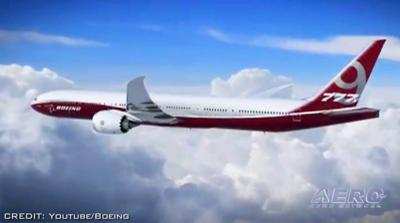Includes Partnership To Expand Commercialization Of Aerospace Composites
Boeing has signed a memorandum of agreement with leading composite supplier Toray Industries to expand its current contract for the Boeing 787 Dreamliner to include the 777X wings. Once finalized, the long-term contract extension will take effect in 2015 and meet Boeing's customer affordability goals through the Partnering for Success program.

The addition of the 777X to the current 787 contract represents a significant increase in the material provided to Boeing by Toray. Boeing and Toray will also collaborate to improve commercialization of composites in the aerospace market. Specific areas the companies will address include increased consistency and performance of composites across the production system and a cost structure that is more competitive with metals.
"This partnership is a great example of why Toray is the market leader in composite materials," said John Tracy , Boeing chief technology officer and senior vice president for Engineering, Operations & Technology. "Their understanding of the technology is outstanding, but they also know there is much more we can do with composites in aerospace if we work together to improve the performance, processing and economics. Toray is working with us on that and we are happy to expand their work statement to include the 777X."
Boeing and Toray pioneered the use of prepreg composites – a combination of high-strength carbon fiber and toughened epoxy resin – in the 1970s. By 1994, assemblies including the empennage and floor beams were being produced for the 777 program, the first commercial airplane featuring structurally significant composite parts. That early success culminated in the launch of the 787 in 2004, the world's first largely composite commercial airplane.
"We believe that this agreement signifies the solid mutual trust Toray has been building with Boeing through the stable supply of high quality carbon fiber materials since the 1970s," said Akihiro Nikkaku, president, Toray Industries. "It also reflects Boeing's recognition of our world-class technology and firm commitments to expanding composites application to aircraft. Going forward, Toray will continue to duly enhance its supply capacity in line with the production increases planned by Boeing."

"Boeing has partnered with the Japanese aerospace industry for nearly five decades," said George Maffeo , president, Boeing Japan. "Their work encompasses the development and introduction of all current Boeing programs: the Next-Generation 737, 737 MAX, 747, 767, 777 and 787 Dreamliner. The consistent performance of our Japanese partners and their enduring effort and dedication, as exemplified today by Toray, has helped Boeing achieve tremendous success with our products. We couldn't be more delighted to continue that legacy with the 777X."
With this agreement, Boeing will have contracts in place for more than 75 percent of the major structural material for the 777X. The wingspan of the 777X measures 235.4 feet, 22.8 feet longer than the span of today's 777-300ER. Its raked wingtip and optimized span will deliver greater efficiency and significant fuel savings while being compatible with today's airport gates. The 777X wings will be manufactured at Boeing's Everett, WA site.
In 2013, Boeing spent more than $4 billion on goods and services in Japan. Including this agreement for the 777X composite wing, Boeing expects to purchase an additional $36 billion of goods and services locally by the end of the decade, supporting tens of thousands of aerospace jobs.
(Images from file)
 Unfortunate... ANN/SportPlane Resource Guide Adds To Cautionary Advisories
Unfortunate... ANN/SportPlane Resource Guide Adds To Cautionary Advisories ANN FAQ: Turn On Post Notifications
ANN FAQ: Turn On Post Notifications ANN's Daily Aero-Term (04.29.24): Visual Approach Slope Indicator (VASI)
ANN's Daily Aero-Term (04.29.24): Visual Approach Slope Indicator (VASI) ANN's Daily Aero-Term (04.28.24): Airport Marking Aids
ANN's Daily Aero-Term (04.28.24): Airport Marking Aids ANN's Daily Aero-Linx (04.28.24)
ANN's Daily Aero-Linx (04.28.24)




